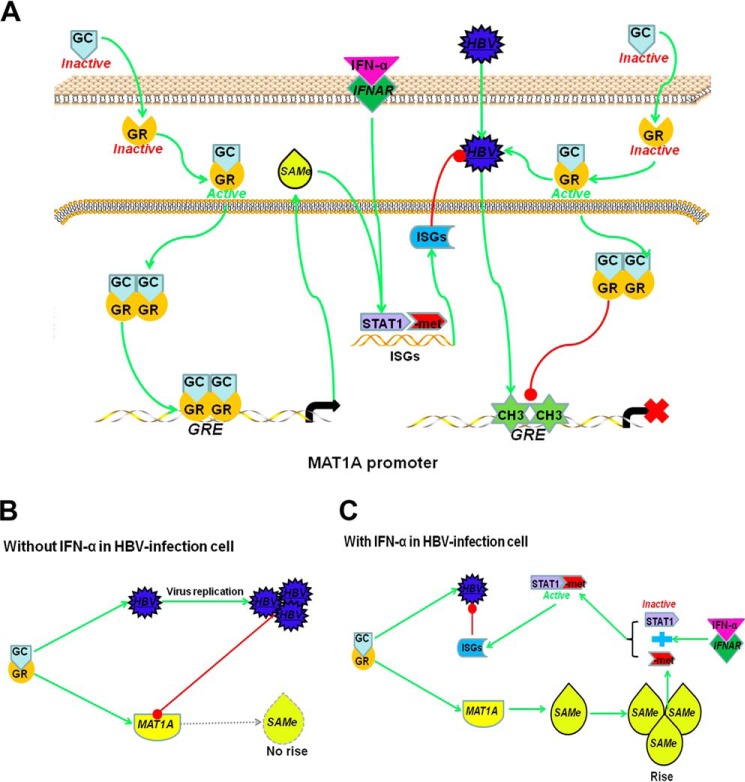FIGURE 10.
Proposed mechanism/model for the rationale of treatment with a combination regimen of GCs and IFN-α in HBV-infected cell. A, GR is stimulated by GCs and translocates to the nucleus. GCs induce MAT1A expression by enhancing the binding of GR to GREs in the MAT1A promoter, which induces the production of AdoMet (SAMe). GC-induced production of AdoMet, which enhances the antiviral effect of IFN-α. HBV infection leads to hypermethylation in the MAT1A promoter and disturbs GR binding to GRE in the MAT1A promoter. B, in HBV-infected cells not treated with IFN-α, HBV was able to compete with MAT1A for binding to GR at the GRE site. GCs activate HBV replication, which suppresses the expression of MAT1A and production of AdoMet. C, in HBV-infected cells treated with IFN-α, HBV replication was effectively suppressed by IFN-α, GCs induced an increase of AdoMet production through a positive feedback loop, which promoted expression of the ISGs and enhanced the antiviral effect of IFN-α by improving STAT1 methylation rather than phosphorylation.

